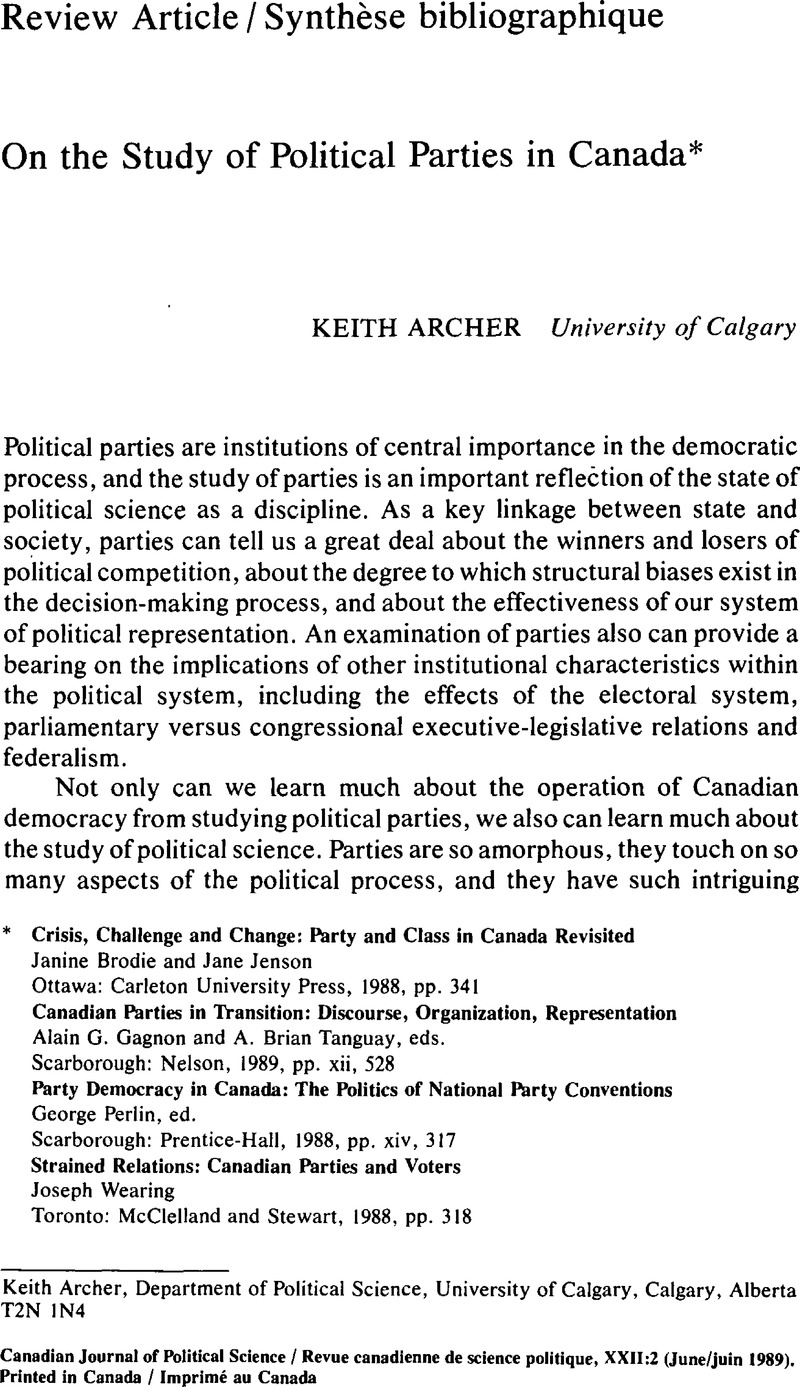Article contents
On the Study of Political Parties in Canada*
Published online by Cambridge University Press: 10 November 2009
Abstract

- Type
- Review Article/Synthèse Bibliographique
- Information
- Canadian Journal of Political Science/Revue canadienne de science politique , Volume 22 , Issue 2 , June 1989 , pp. 389 - 398
- Copyright
- Copyright © Canadian Political Science Association (l'Association canadienne de science politique) and/et la Société québécoise de science politique 1989
References
1 Berger, Suzanne, “Introduction,” in Berger, Suzanne (ed.), Organizing Interests in Western Europe: Pluralism, Corporatism and the Transformation of Politics (Cambridge: Cambridge University Press, 1981).Google Scholar
2 The Founding of New Societies (New York: Harcourt, Brace and World, 1964).
3 “Liberalism, Conservatism and Socialism in Canada: An Interpretation,” Canadian Journal of Economics and Political Science 32 (1966), 143–71.
4 Crisis, Challenge and Change, 1.
5 Brodie and Jenson, “Piercing the Smokescreen: Brokerage Parties and Class Politics,” in Gagnon and Tanguay, Canadian Parties in Transition, 37.
6 Claude Galipeau, “Political Parties, Interest Groups, and New Social Movements: Toward New Representation?” in Ibid., 411.
7 Levesque, Terrence, “On the Outcome of the 1983 Conservative Leadership Convention: How They Shot Themselves in the Other Foot,” this Journal 16 (1983), 779–84.Google Scholar
- 1
- Cited by




